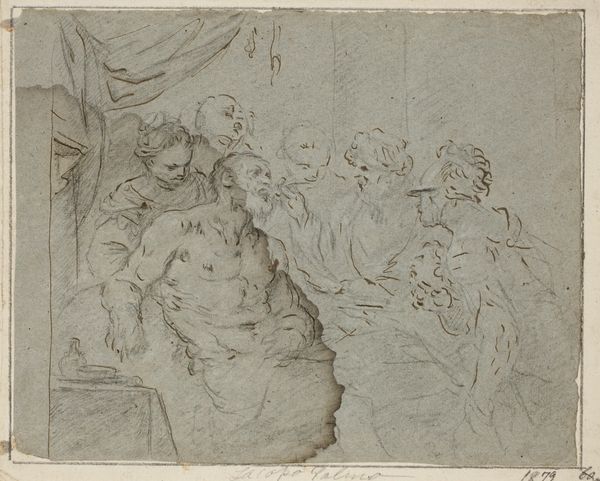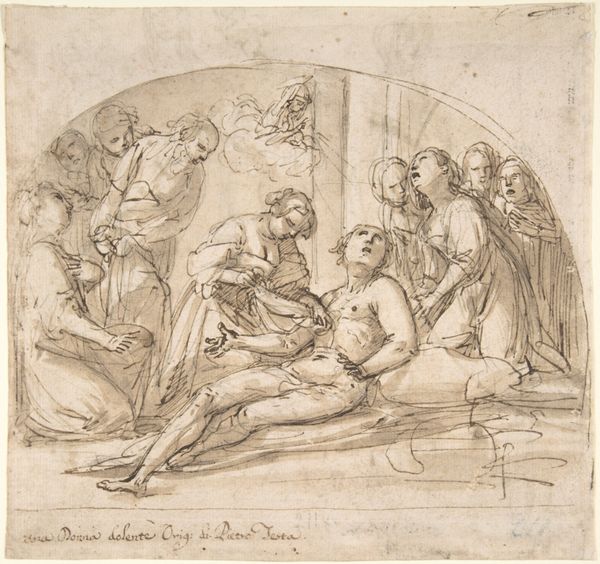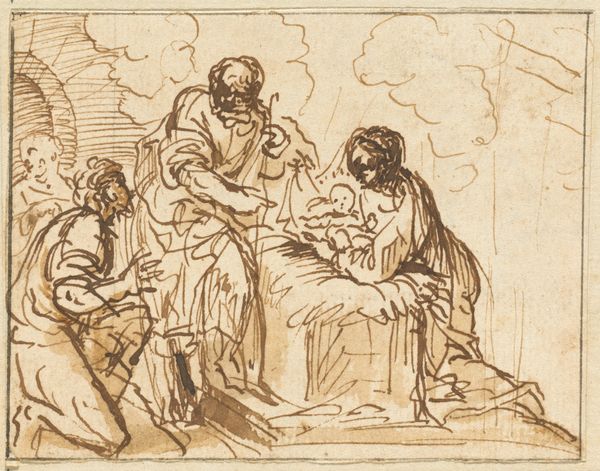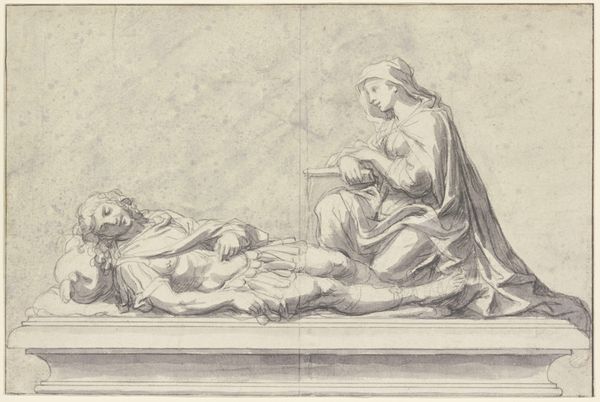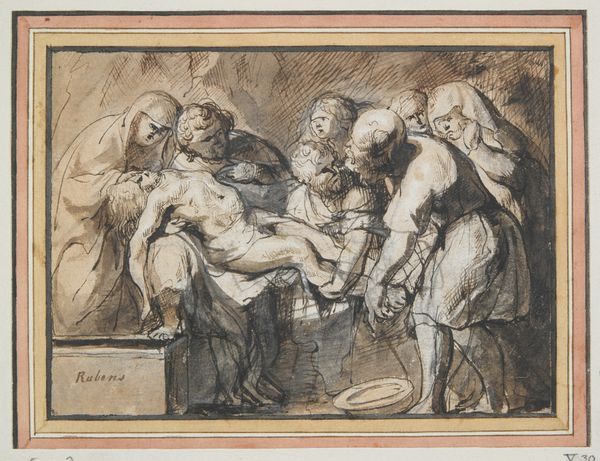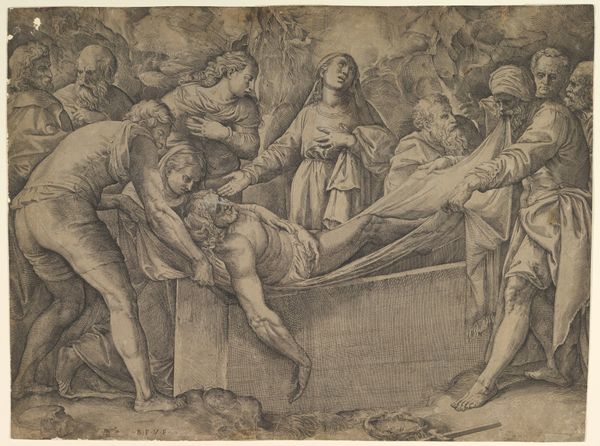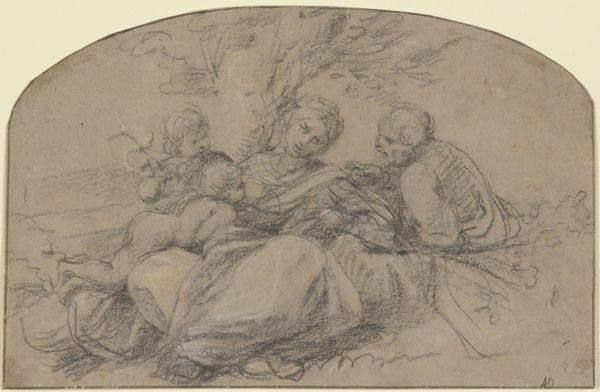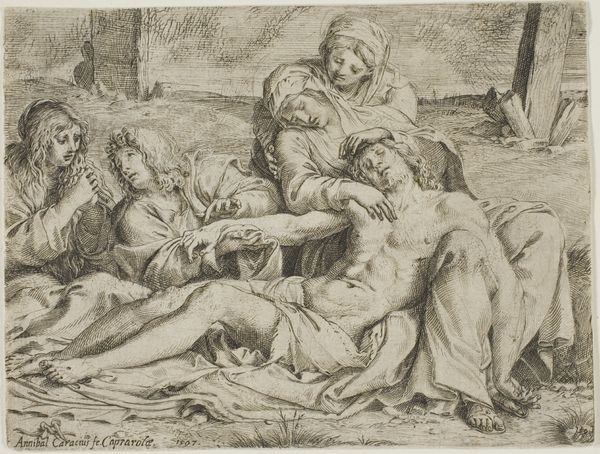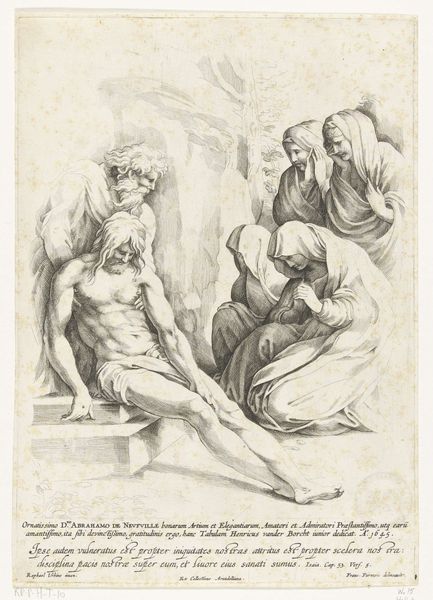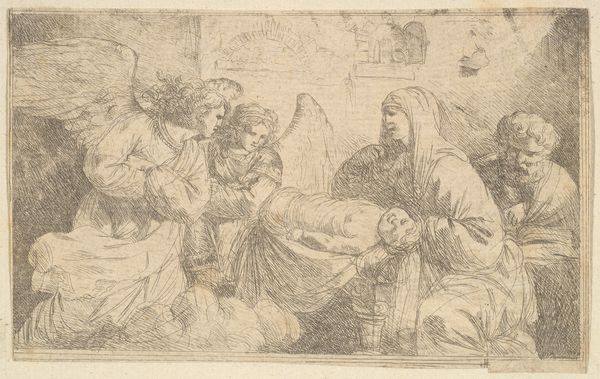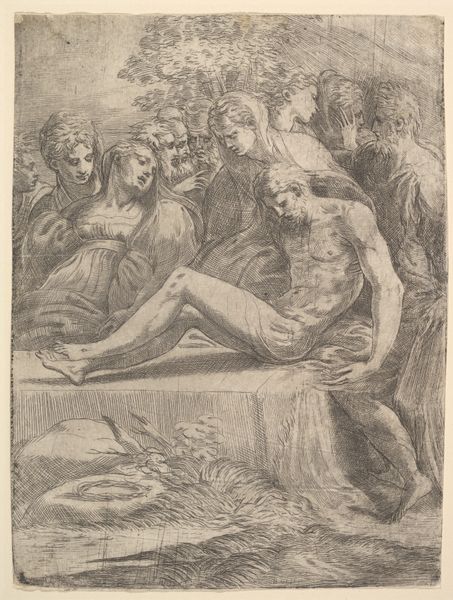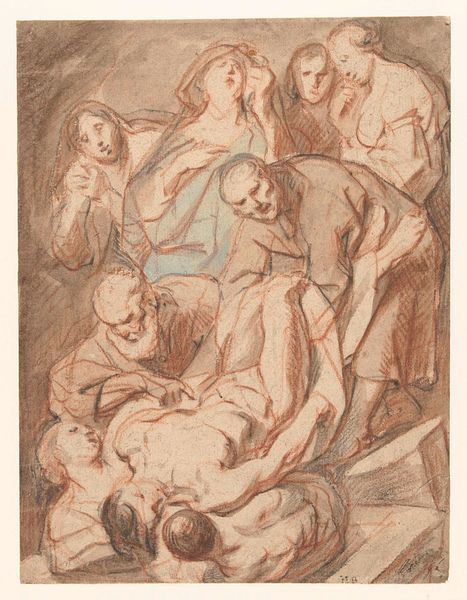
St. Charles Borromeo Giving Communion to the Plague-Stricken 1630 - 1690
0:00
0:00
drawing, print, pencil
#
drawing
#
narrative-art
#
baroque
# print
#
figuration
#
pencil
#
history-painting
#
academic-art
Dimensions: 5 7/8 x 16 3/8 in. (14.9 x 41.6 cm)
Copyright: Public Domain
Curator: At the Metropolitan Museum, we’re looking at Charles Le Brun's drawing, "St. Charles Borromeo Giving Communion to the Plague-Stricken," likely created between 1630 and 1690. Editor: Immediately, I'm struck by the sketch-like quality. It feels raw, urgent— the quick pencil strokes almost mirroring the frantic energy one might associate with a plague. The figures, though detailed, seem to almost dissolve into the background. Curator: It's compelling, isn’t it? Le Brun was a dominant figure in French art, deeply intertwined with the court of Louis XIV. This drawing, while seemingly preparatory, reflects the Baroque fascination with intense emotion and dramatic narrative, often used to promote specific ideologies. It shows the active charitable role of the Bishop of Milan. Editor: The composition is interesting. The diagonal sweep of bodies leads our eye directly to St. Charles offering communion. The lighting, or rather the implied lighting created through shading, focuses on this central act of giving. There’s an undeniable visual hierarchy. Curator: Absolutely. St. Charles's actions, idealized here, served as a potent example of piety and leadership during times of crisis. The piece reflects the power of the Catholic Church and, by extension, the monarchy. Also, this artwork emerged during a period of devastating pandemics across Europe. Visualizing such a figure bringing comfort helped bolster his reputation, and indeed, Catholicism. Editor: One could almost view it as a study in contrasts, life, and death. The suffering masses and, against this backdrop, this gesture of faith and hope—however frail it may appear. It makes the act of administering communion all the more poignant through this use of negative space that defines forms rather than isolates objects or entities. Curator: Indeed. Art of this period often walked a fine line, using dramatic visuals to simultaneously convey suffering and maintain a sense of order and divine purpose within societal structures. This piece offers insight into how social and religious institutions shape responses and representations during crisis. Editor: Ultimately, regardless of its historical underpinnings, what captivates me is Le Brun's mastery over simple graphite that can evoke a response with great expressive force. Curator: Yes. It highlights how effective art can be to persuade an audience with images that make the population empathize.
Comments
No comments
Be the first to comment and join the conversation on the ultimate creative platform.
